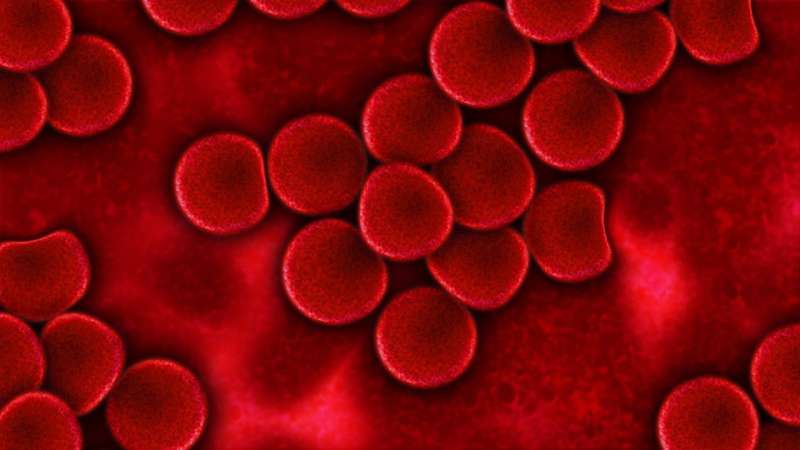This article has been reviewed according to Science X's editorial process and policies. Editors have highlighted the following attributes while ensuring the content's credibility:
fact-checked
peer-reviewed publication
trusted source
proofread
Researchers develop first heat map for individual red blood cells

Entropy is often associated with disorder and chaos, but in biology it is related to energy efficiency and is closely linked to metabolism, the set of chemical reactions that sustain life.
An international research team led by the Universities of Barcelona and Padua, with the participation of Göttingen University and the Universities Complutense and Francisco de Vitoria in Madrid, has now developed a novel methodology for the measurement of entropy production at the scale of a nanometer.
The new approach enabled the scientists to measure the heat flow, known as the entropy production rate, of single red blood cells. The research was published in Science.
Researchers used a new way to measure the heat flow from the active metabolic forces inside the red blood cells by quantifying the increasing entropy by simply observing the continuous and erratic fluctuations of the red blood cell membrane.
To ensure that this approach works, the researchers also created more complex approaches, where small, micrometer-sized particles were glued to the membrane which could not only be used to measure the fluctuations of the membrane, but also to apply minuscule forces that are created by simply illuminating the particles with light.
Such colloidal particles—small solid particles suspended in a fluid phase—can be seen as an excellent way to measure and also manipulate the motion of the living cells' membrane. For their calculations using actual red blood cells, the researchers used experimental approaches based on direct optical manipulation of the membrane, but also optical sensing and ultrafast live-imaging microscopy.
The researchers at the University of Göttingen contributed by carrying out sensitive and precise experiments. "We developed an experiment that used photons, by which we mean light, to hold the cells so gently that the delicate heat flux was not perturbed by the light, but still strong enough to measure its effects," says Professor Timo Betz, from the Biophysics Institute in Göttingen.
"Heat is a symptom of cell health, and this finding could open up new ways to determine tissue health," explains lead researcher Professor Felix Ritort, Institute of Nanoscience and Nanotechnology, University of Barcelona. He adds, "Characterizing the entropy production in living systems is crucial for understanding the efficiency of energy conversion processes."
There is great interest in measuring entropy production in physical and biological systems because they are relevant to so many other systems. "This breakthrough has far-reaching implications for our understanding of metabolism and energy transport in living systems," says Betz.
"In addition, these findings may prove useful for applications in health and medicine or guide the way to develop new smart materials that exploit a controlled entropy production rate to create a response to small external stimuli."
The findings are published in Science.
More information: I. Di Terlizzi et al, Variance sum rule for entropy production, Science (2024). DOI: 10.1126/science.adh1823
Journal information: Science
Provided by University of Göttingen




















